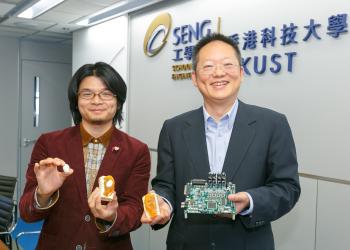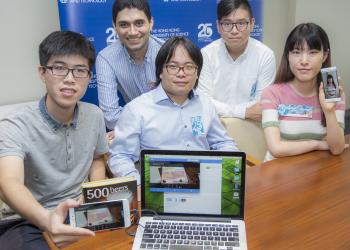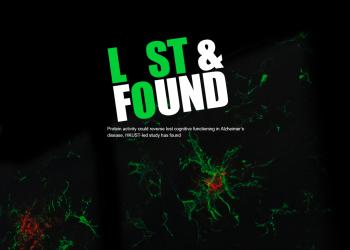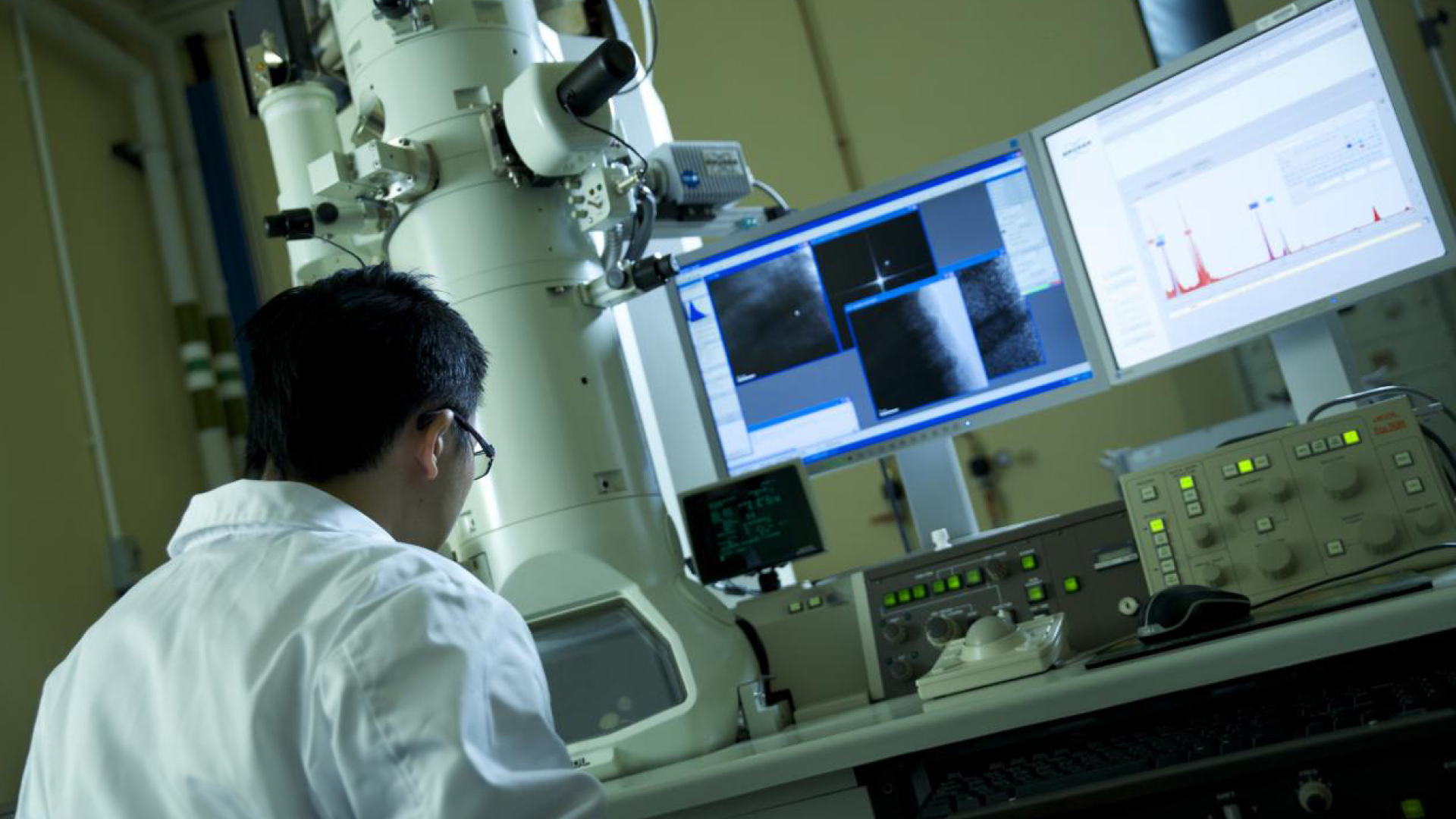News & Stories
2016

News
HKUST Researchers Develop Novel Audio Technology and Sales Model that Bring More Affordable and Better-performed Hearing Aids
Researchers from The Hong Kong University of Science and Technology (HKUST) have developed an intelligent hearing aid which not only allows users to adjust the clarity of selected sound sources, but is also much more affordable at just one tenth the price of similar products in the market.Developed by Prof Richard So from the Department of Industrial Engineering and Logistics Management and his student Calvin Zhang, fresh graduate of MPhil Program in Technology Leadership and Entrepreneurship (TLE), the novel audio technology not only promises to improve life for the elderly and the hearing-impaired, but will also enhance the audio quality of hearing protection equipment and communication devices such as mobile phones and walkie-talkies, as well as the accuracy of voice recognition devices.

News
HKUST Committed to Nurturing Young Research Talents Three Undergraduates Publish Paper in Nature Communications
The Hong Kong University of Science and Technology (HKUST) is dedicated to nurturing students’ passion and interests in research. Three undergraduate students have recently discovered a method that could make production of entangled photon pairs (biphotons) – an essential element for quantum communication and quantum network – much easier and cheaper, taking popularization of such next-generation communication a step closer to reality.

News
HKUST Builds Frameworks to Boost Development of Mobile Applications on Augmented Reality
Augmented Reality (AR) is the next big thing for mobile devices. Researchers at The Hong Kong University of Science and Technology (HKUST) are on course of building a novel AR platform for mobile devices, in efforts to facilitate an ecosystem for entrepreneurs and programmers to develop AR programs and applications on mobile and wearable devices.
Prof Pan Hui, Director of HKUST-DT System and Media Lab (SyMLab), said the lab resolved to a bottom-up approach in its research to facilitate the development of AR applications on mobile and wearable devices. “We sought to identify and develop major AR components including hardware platforms, software frameworks and display devices, then we enable technologies such as object tracking and process offloading to significantly accelerate the development cycle,” he said.

News
HKUST Researchers Find Possible Mechanisms of Human Brain Disorders That May Shed Light on New Treatments
A research team led by Prof Mingjie Zhang, Kerry Holdings Professor of Science of the Division of Life Science at The Hong Kong University of Science and Technology (HKUST), has achieved a breakthrough that provides mechanistic insights into the causes that lead to various neuropsychiatric disorders such as autism, intellectual disorders (ID) and schizophrenia. With their discoveries, new treatments for these disorders may be developed in near future.
All neurons in our brain are wired via a micron-sized connection unit called synapse, and each synapse contains a layer of densely-packed, protein-rich compartment called postsynaptic density (PSD), which is responsible for brain signal processing and transmission. While the existence of PSDs has been known to scientists for 60 years, how PSDs form and change in response to brain activities are poorly understood.

News
HKUST Develops Tiny Lasers that Open New Era for Light-based Computing
Researchers at The Hong Kong University of Science and Technology (HKUST) have fabricated microscopically-small lasers directly on silicon, enabling the future-generation microprocessors to run faster and less power-hungry - a significant step towards light-based computing.
The innovation, made by Prof Kei-may Lau, Fang Professor of Engineering and Chair Professor of the Department of Electronic and Computer Engineering, in collaboration with the University of California, Santa Barbara; Sandia National Laboratories and Harvard University, marks a major breakthrough for the semiconductor industry and well beyond.

News
HKUST Finds a New Material System that Opens a New Era for Organic Solar Cells
Researchers at The Hong Kong University of Science and Technology (HKUST) have discovered a novel material system that would revolutionize the future development of Organic Solar Cells (OSCs). OSCs based on this new material system have demonstrated ultrafast and efficient charge separation despite a nearly zero charge separation driving force, meaning that the more environmentally-friendly OSCs may be able to perform as good as inorganic solar cells in the future.The breakthrough, discovered by a research team led by Prof. Henry He Yan from the Department of Chemistry, was published in Nature Energy in June.

News
Lost and Found
HKUST researchers, collaborating with colleagues from Zhejiang University and the University of Glasgow, have found that the protein interleukin-33 (IL-33) reduces memory loss and other aspects of cognitive decline in conditions similar to Alzheimer’s disease (AD). With 46.8 million people around the world affected by AD and the number rising, the enormous burden on patients, their care-givers and health systems could soon be alleviated.
Mainly affecting the elderly, AD involves memory loss and impaired reasoning, judgment and movement. Research team leader Prof. Nancy Ip, Dean of Science, Director of the State Key Laboratory of Molecular Neuroscience and the Morningside Professor of Life Science, described the disease as an “urgent health threat”, particularly in Hong Kong with its rapidly aging population.

News
HKUST Leads Research Project to Mitigate the Risks and Damage of Landslides in Hong Kong
The Hong Kong University of Science and Technology (HKUST) is leading a multi-disciplinary team comprising engineers, computer scientists, environmental scientists and ecologists from various universities and institutions, to study the mechanism of debris flow in efforts to mitigate the risks and damage of landslides in Hong Kong.






